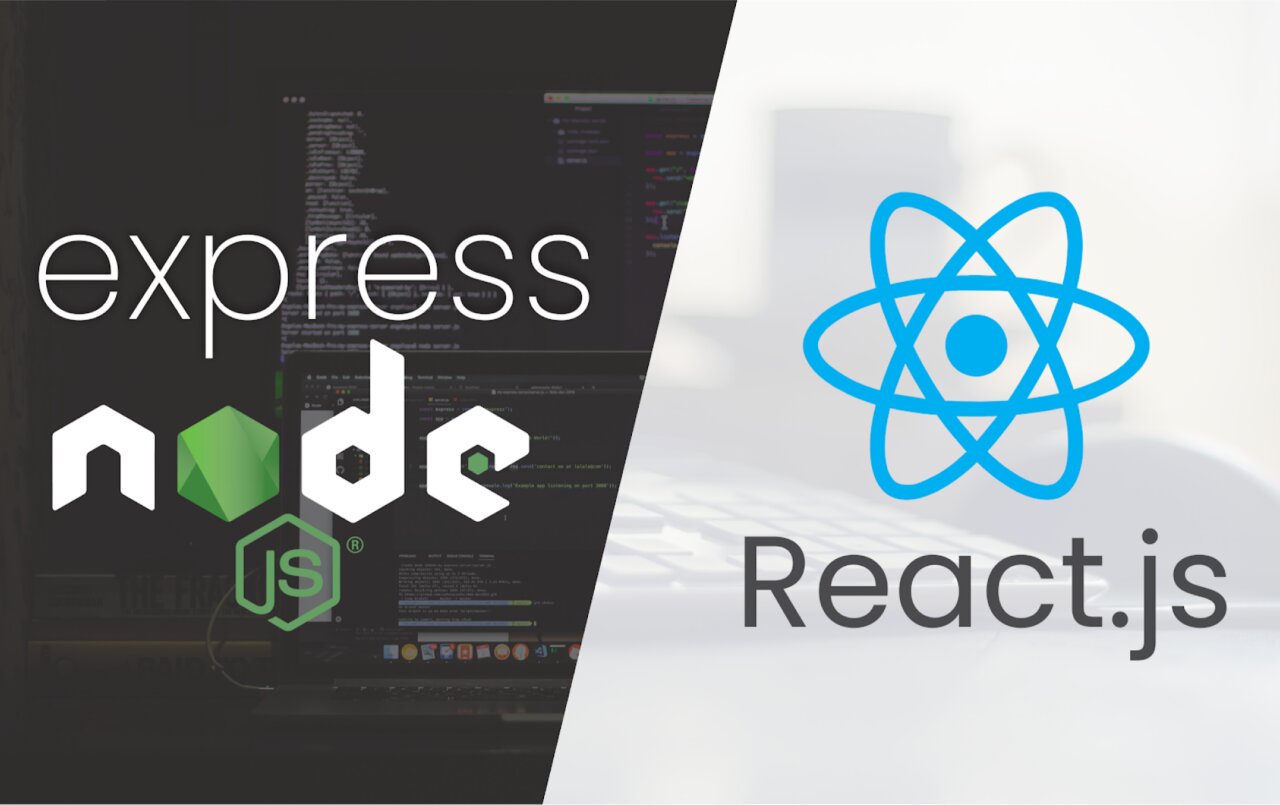Comparing Node.js and React: A Guide for Development Companies

With JavaScript being one of the most popular languages out there, there are so many JavaScript frameworks to choose from. Node.js and React.js are two of the most popular options out there, but developers sometimes struggle to know which one is better.
The main difference is that Node.js is a back-end framework, and React.js is used for developing user interfaces. Both frameworks are quite popular and have their advantages and disadvantages.
If you want to find out which one you should use for your next project, read on. Below, we share the key features of Node.js and React.js and their pros and cons. After reading this article, you will have a clear picture of what technology suits your project’s needs.
Let’s begin..
Node.js, created by Ryan Dahl, is powered by Google Chrome’s V8 engine. It’s a JavaScript framework used primarily for backend development, allowing applications to be built entirely in JavaScript. Node.js stands out for its event-driven, non-blocking model, making it efficient and lightweight. It’s widely used for database access, hosting APIs, and handling HTTP requests.
As an open-source, cross-platform runtime environment, Node.js is versatile and popular for various projects. Major companies like Netflix, Uber, and Trello utilize Node.js, benefiting from its performance and scalability. Operating outside the browser, Node.js runs on the V8 engine, contributing to its high performance.
Node.js handles multiple requests in a single process without creating a separate thread for each one. It includes asynchronous I/O primitives in its standard library, preventing JavaScript from blocking. This design allows Node.js to efficiently manage input/output operations, such as database access or file reading, by resuming operations when responses are available, rather than blocking threads or wasting CPU cycles.
One of Node.js’s strengths is its ability to handle thousands of concurrent connections with a single server, minimizing the complexity of thread management. This feature is particularly advantageous for frontend developers familiar with JavaScript, as they can now use the same language for server-side development without needing to learn a new language.

Netflix: This popular OTT platform uses Node.js for A/B testing to enhance the experience of its 209.18 million users. Node.js’s lightweight and fast nature helps Netflix address scalability and dependency issues.
Uber: The ride-sharing service considers Node.Js – a key technology for scaling in response to growing demand.
Trello: Known for project management, Trello uses Node.js on its server-side to efficiently manage updates that require numerous open connections.
Node.js offers a range of features that make it a popular choice for developing web applications. Here are seven key features:
- Non-blocking I/O Model: Node.js uses an event-driven, non-blocking I/O model, enabling efficient handling of multiple simultaneous operations. This approach allows for faster web application performance, as it prevents server blocking and efficiently manages asynchronous tasks.
- Open-Source and Free: Node.js is an open-source platform, making it freely available for developers. This accessibility encourages a large community of contributors who continuously improve and expand its capabilities.
- Versatile Server Creation: Developers can use Node.js to create various types of servers, including HTTP, TCP, and DNS servers. Node.js comes with many built-in APIs, providing a rich set of tools for server development and networked applications.
- Built-in Unit Testing: Node.js supports unit testing with built-in frameworks like Jasmine, allowing developers to quickly test their code. This feature ensures code reliability and helps in maintaining high-quality standards.
- Scalability: Applications built with Node.js can be scaled both horizontally (by adding more nodes to the system) and vertically (by adding resources to existing nodes). This scalability is a critical feature for growing applications, as it helps in handling increased load and user traffic efficiently.
- ECMAScript Standards Compatibility: Node.js supports standard ECMAScript (ES) features, allowing developers to use the latest JavaScript features without compatibility issues. This compatibility ensures that developers can leverage modern JavaScript capabilities for server-side development.
Control over ECMAScript Versions: With Node.js, developers have control over which ECMAScript version they use. This autonomy means that developers don’t have to wait for users to update their browsers to support the latest JavaScript features, as they can choose the Node.js version that supports the desired ECMAScript standards.
ReactJS was developed by a Facebook software engineer named Jordan Walke. ReactJS is mainly a front-end open source and JavaScript front-end library used for building the user interfaces of our web applications or websites. There are many alternatives to ReactJS, such as AngularJs and VueJs. Initially, to show the news feed while chatting, React.js was used. Allowing the development of a dynamic library with high performance was the main motive for building ReactJS.
From the New York Times to Twitter, the front-end library ReactJS is used in many content-based applications.
Many applications, like Facebook, rely mainly on user interactions with the user interface elements. Most of the dynamic elements of the Facebook web application are mainly built with the ReactJS front-end library.
Social web applications like Instagram, which Facebook maintains, also use ReactJS. For features like Google Map APIs and geolocations, Instagram uses ReactJS.
For the Gibbon platform of video streaming applications like Netflix, the ReactJS library is used. This platform applies to low-performance TV devices instead of the DOM used in web browsers. The modularity, runtime performance, speed, etc. are provided to Netflix by ReactJS.

Facebook: As the birthplace of React.js, Facebook uses it extensively in its web application, particularly for dynamic eQlements like the news feed and user interactions.
Instagram: Owned by Facebook, Instagram utilizes React.js for various features, including Google Map APIs and geolocations, enhancing the app’s interactivity and functionality.
New York Times and Twitter: These content-based platforms leverage React.js in their front-end development, benefiting from its efficient UI rendering and interactive features.
React.js, a popular JavaScript library for building user interfaces, offers several notable features that enhance web and mobile app development:
- Virtual DOM for Enhanced Performance: React.js uses a virtual DOM (Document Object Model) which improves app performance. The virtual DOM updates component states or props efficiently without reloading the entire page, leading to faster and smoother user experiences.
- Developer Tools for Debugging: React.js provides specialized debugging tools and developer tools. These tools make it easier for developers to debug their code, optimize performance, and understand the component hierarchies in their applications.
- Unidirectional Data Flow for Code Stability: React.js employs unidirectional or downward data flow, which enhances code stability and ensures better app performance. This approach simplifies the data flow, making it easier to reason about and debug the application.
- Cross-Platform Mobile App Development: React.js enables developers to build rich, native-like mobile applications using the same design patterns as in web development. These applications are compatible with both Android and iOS platforms, allowing for a wider reach.
- Reusable Components: React.js promotes the use of reusable components, which makes code more manageable and maintainable. Developers can create modular components that can be reused across different parts of the application or even in different projects.
- Strong Community Support: Being an open-source library, React.js benefits from strong community support and a rich ecosystem of libraries and tools. This community provides a wealth of resources, including tutorials, forums, and third-party libraries, that help developers at all levels.
JSX Syntax for Readability: React.js uses JSX, a syntax extension that allows HTML and JavaScript to coexist in the same file. This makes the code more readable and easier to understand, especially for developers familiar with HTML and JavaScript.
Single Programming Language: Node.js allows developers to use JavaScript for both client-side and server-side scripting, enabling a more uniform and integrated development process.
Asynchronous, Non-blocking I/O: Node.js operates on a non-blocking, event-driven architecture, which makes it efficient for handling concurrent requests and scalable for high-traffic applications.
Fast Performance: Node.js’s use of the V8 JavaScript engine, developed by Google, allows for fast code execution, enhancing application performance.
Strong Community Support: Node.js has a large and active community that contributes to a rich ecosystem of packages and modules available through npm (Node Package Manager), making development faster and more efficient.
Suitable for Real-Time Applications: Node.js is particularly well-suited for building real-time applications, such as chat applications and online gaming, due to its event-driven architecture.
Callback Hell: The extensive use of callbacks can lead to a situation known as “Callback Hell” or “Pyramid of Doom,” where code becomes complex and difficult to maintain.
Not Suitable for CPU-Intensive Tasks: Node.js is less effective for processing CPU-intensive tasks, as its single-threaded nature can become a bottleneck in such scenarios.
Immature Tools: Some tools in the Node.js ecosystem are still immature and not as robust as those available in other languages, which can lead to issues in development and production environments.
Advantages of React.js:
Disadvantages of React.js:
Component-Based Architecture: React.js promotes the use of reusable components, allowing for more manageable and maintainable code, as well as faster development.
Virtual DOM: React.js uses a virtual DOM, which optimizes rendering and improves the performance of web applications.
Strong Community and Ecosystem: React.js has a large community and ecosystem, with numerous libraries, tools, and extensions available to enhance development.
SEO Friendly: React.js can be more SEO friendly compared to other JavaScript frameworks, as it allows for server-side rendering.
Backed by Facebook: React.js is maintained by Facebook, which ensures regular updates and a degree of stability and credibility.
Learning Curve: While React.js is simpler compared to other frameworks, it still has a learning curve, especially for understanding JSX and the overall ecosystem.
Rapid Pace of Development: The rapid development of React.js can sometimes lead to frequent changes and updates, which requires developers to continuously adapt and learn.
JSX as a Barrier: JSX, a syntax extension used in React.js, mixes HTML with JavaScript, which can be a barrier for developers accustomed to more traditional separation of concerns.
Only the View Layer: React.js is only concerned with the view layer of an application, so developers need to integrate other technologies for a complete solution.
How much does it cost to build a Node.js and React.js app?
Building a Node.js and React.js app, particularly in the form of a Minimum Viable Product (MVP), is an effective strategy for startups to test market viability and attract initial investors. The cost of developing such an app varies based on several factors, including geographic location, team composition, and project complexity.
Development Cost Based on Location:
Development costs differ significantly across regions. For example:
In the United States, React development services may cost over $100 per hour, while Node.js development services are typically priced above $120 per hour.
In Western European countries like Germany, React development might cost between $40 and $60 per hour, and Node.js development ranges from $60 to $80 per hour.
In Eastern European countries like Ukraine, React and Node.js development services are generally more affordable, ranging from $25 to $50 per hour and $25 to $60 per hour, respectively.
Outsourcing as a Cost-Effective Option:
Outsourcing software development can be a strategic way to access high-quality services at a lower cost. This approach reduces expenses related to HR, office space, hardware, and software.
Importance of a Skilled Development Team:
For a high-quality app, it’s crucial to work with a well-rounded development team, typically comprising:
App Designers: Responsible for creating user-friendly and visually appealing UI/UX designs.
Software Engineers: Skilled in React and Node.js to ensure robust functionality.
QA Engineers: To guarantee that the app functions seamlessly across various devices.
Project Manager: To oversee the development process, optimize timelines, and provide regular updates.
You may be doubtful about the size of the team you need to hire. In this case, just drop us a line: we’ll make everything clear, provide you with detailed answers, and advise on the best solutions.
Final Thoughts:
Despite having different functions, React and Node.js work well together to support full-stack web development. React, a JavaScript package, is mostly used for constructing dynamic and responsive front-ends, enabling an efficient approach to creating user interfaces with its component-based architecture. However, Node.js is a JavaScript runtime environment that makes back-end development easier and makes it possible to create server-side apps that are scalable and effective.
Selecting React and Node.js as the foundation for your next software project can be a strategic decision inspired by the success of these major businesses to build compelling and efficient digital solutions.
React vs. Node: FAQ’s
What is the difference between Node.js and React?
Node.js is a library for back-end development, while React is a front-end development framework.
Can I use Node.js and React?
Yes, you can utilize both of them to build high-quality SPAs and PWAs, high load websites, data streaming platforms, online marketplaces, online shops, social media web apps, etc.
Do I need to use React when building a Node.js-based app?
No, you can opt for MEAN/ MEVN stack and replace React with the Angular or Vue frameworks, respectively.












